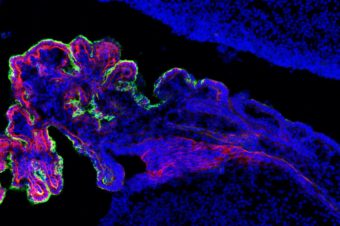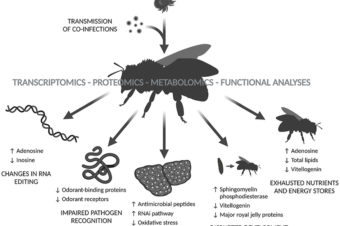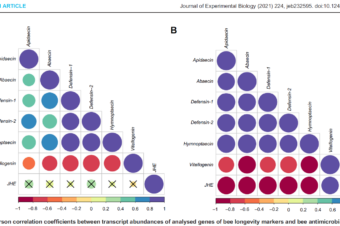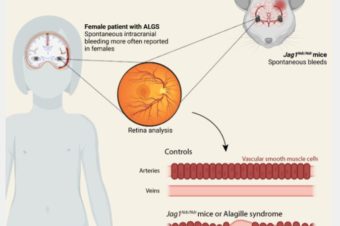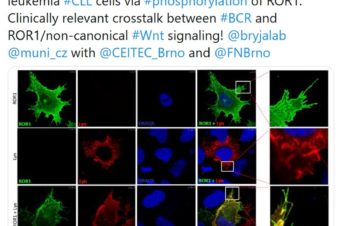Abstract:
The choroid plexus (ChP) produces cerebrospinal fluid and forms an essential brain barrier. ChP tissues form in each brain ventricle, each one adopting a distinct shape, but remarkably little is known about the mechanisms underlying ChP development. Here, we show that epithelial WNT5A is crucial for determining fourth ventricle (4V) ChP morphogenesis and size in mouse. Systemic Wnt5a knockout, or forced Wnt5a overexpression beginning at embryonic day 10.5, profoundly reduced ChP size and development. However, Wnt5a expression was enriched in Foxj1-positive epithelial cells of 4V ChP plexus, and its conditional deletion in these cells affected the branched, villous morphology of the 4V ChP. We found that WNT5A was enriched in epithelial cells localized to the distal tips of 4V ChP villi, where WNT5A acted locally to activate non-canonical WNT signaling via ROR1 and ROR2 receptors. During 4V ChP development, MEIS1 bound to the proximal Wnt5a promoter, and gain- and loss-of-function approaches demonstrated that MEIS1 regulated Wnt5a expression. Collectively, our findings demonstrate a dual function of WNT5A in ChP development and identify MEIS transcription factors as upstream regulators of Wnt5a in the 4V ChP epithelium.
Development. 2021 May 15;148(10):dev192054. doi: 10.1242/dev.192054. Epub 2021 May 25.
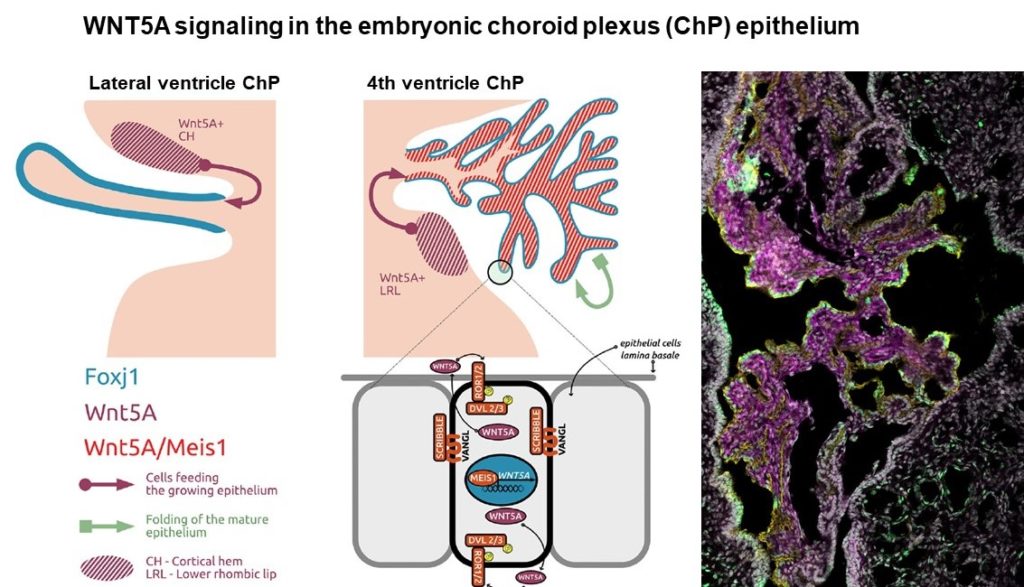
Authors:
Karol Kaiser 1, Ahram Jang 2, Petra Kompanikova 1, Melody P Lun 2, Jan Prochazka 3, Ondrej Machon 4, Neil Dani 2, Michaela Prochazkova 3, Benoit Laurent 5,6, Daniel Gyllborg 7, Renee van Amerongen 8, Ryann M Fame 2, Suhasini Gupta 2, Feizhen Wu 9, Roger A Barker 10, Ivana Bukova 3, Radislav Sedlacek 3, Zbynek Kozmik 4, Ernest Arenas 11, Maria K Lehtinen 2, Vitezslav Bryja 1
1 Department of Experimental Biology, Faculty of Science, Masaryk University, Brno 61137, Czech Republic.
2 Department of Pathology, Boston Children’s Hospital, Boston, MA 02115, USA.
3 Czech Centre for Phenogenomics and Laboratory of Transgenic Models of Diseases, Institute of Molecular Genetics of the CAS, Prague 142 20, Czech Republic.
4 Laboratory of Transcriptional Regulation, Institute of Molecular Genetics of the CAS, Prague 142 20, Czech Republic.
5 Research Center on Aging, CIUSSS de l’Estrie – CHUS, Sherbrooke, QC 75361, Canada.
6 Department of Biochemistry and Functional Genomics, Faculty of Medicine and Health Sciences, Université de Sherbrooke, Sherbrooke, QC 75281, Canada.
7 Science for Life Laboratory, Department of Biochemistry and Biophysics, Stockholm University, Solna SE-106 91, Sweden.
8 Swammerdam Institute for Life Sciences, Section of Molecular Cytology, Faculty of Science, University of Amsterdam1098 XH, Netherlands.
9 Shanghai Institute of Cardiovascular Diseases, Zhongshan Hospital, Institutes of Biomedical Sciences, Fudan University, Shanghai 200032, China.
10 John van Geest Centre for Brain Repair and WT-MRC Cambridge Stem Cell Centre, University of Cambridge, Cambridge CB2 0PY, UK.
11 Department of Medical Biochemistry and Biophysics, Karolinska Institutet, Stockholm 171 77, Sweden.
